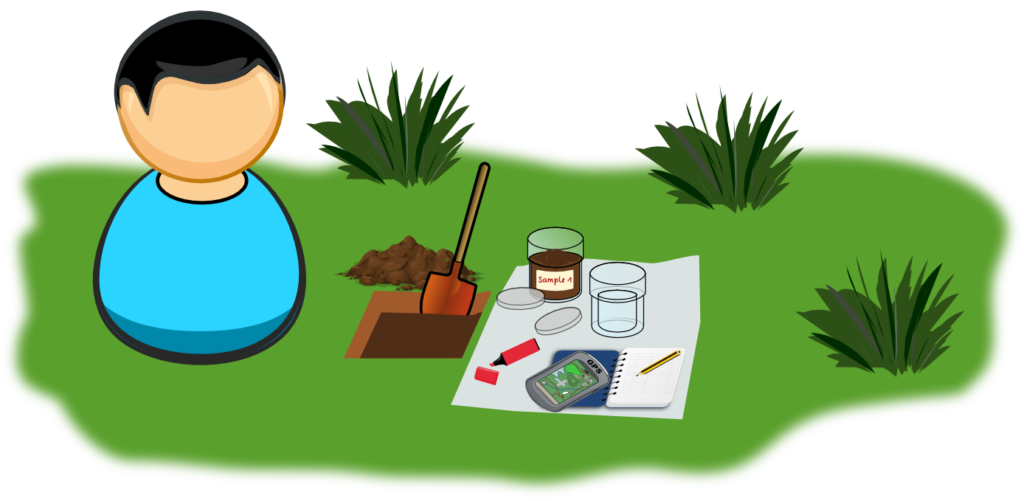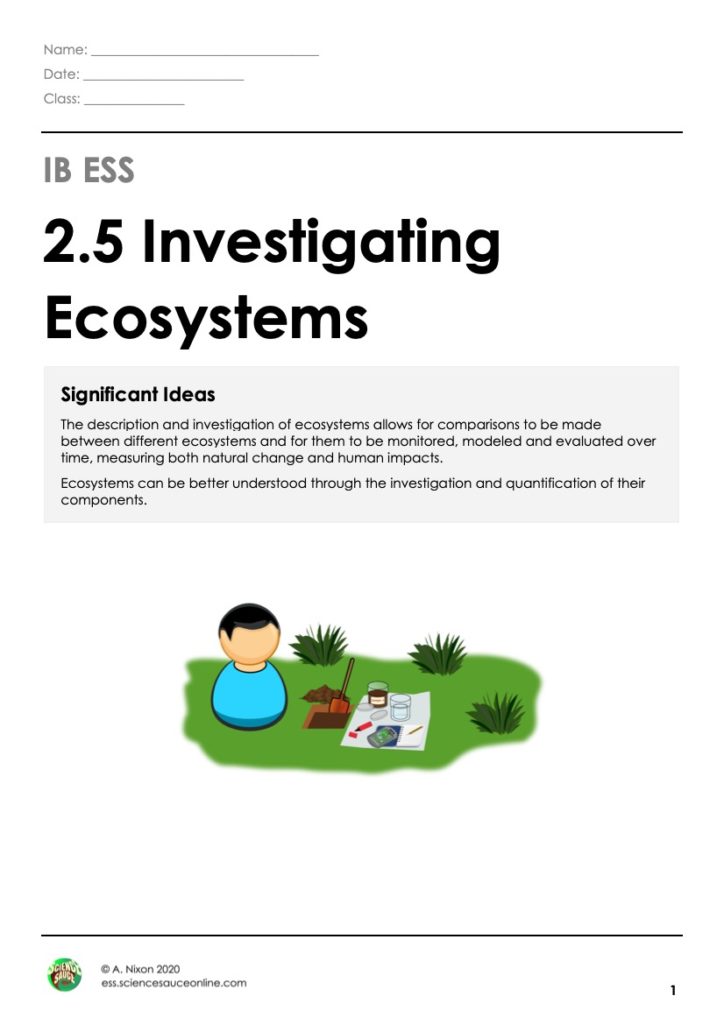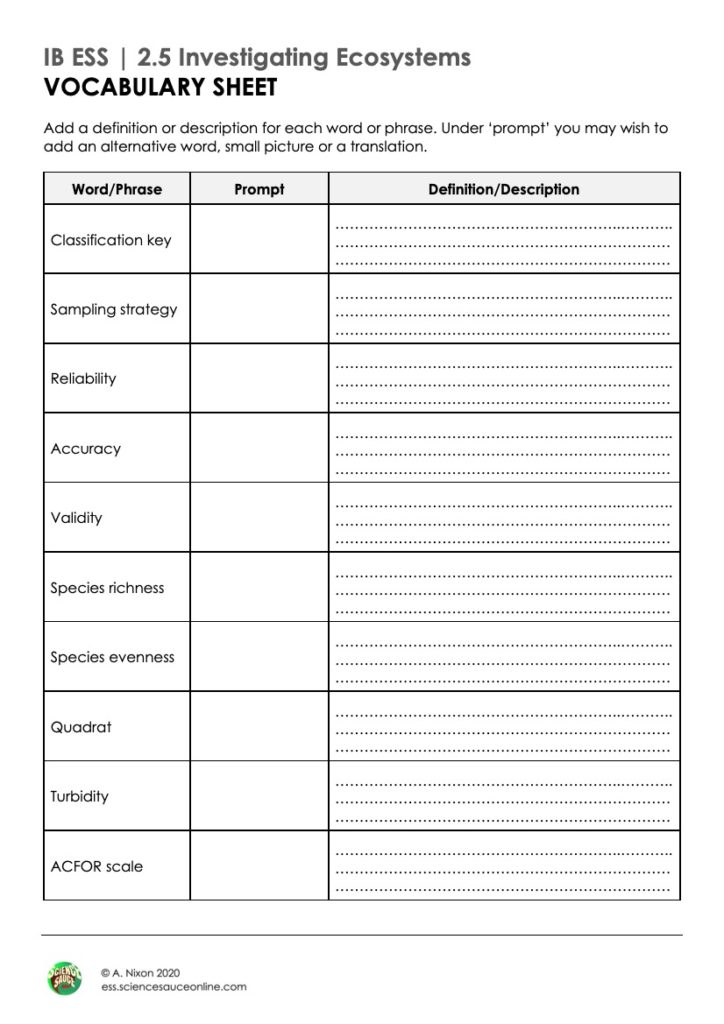Chapter 2.5 focus on practical work. The lessons outlined here provide a theory-based foundation for the practical skills that students should demonstrate through field work.
Ecosystems can be compared, modelled and evaluated by investigating them to obtain quantitative and qualitative data. This improves our understanding of the systems and also allows us to observe and predict the impact of human influences.

Lessons
| 1 | Ecological keys | ||||||
| 2 | Sampling strategies and correct number of samples | ||||||
| 3 | Measuring abiotic factors in ecosystems | ||||||
| 4 | How to use a quadrat | ||||||
| 5 | The Lincoln index Activity | ||||||
| 6 | Simpson’s diversity index | ||||||
Practicals
- Construct an identification key (for a maximum of 8 species).
- Simulate (using seeds in a jar) the capture-mark-recapture method to ascertain the validity of the Lincoln index. (Activity sheet)
- Design and carry out an investigation to determine the change in the population of one or more species along an environmental gradient and investigate a correlation with at least three abiotic variables.
- Use a quadrat to estimate the population(s) of one or more species.
Essay Task
No essay for chapter 2.5 (practical work).


